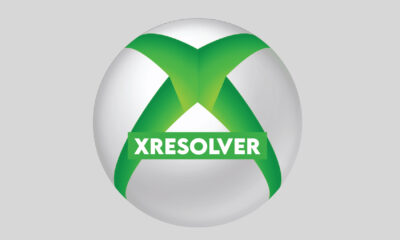Celebrity
How Emericus Zlinszky is Revolutionizing Wetland Conservation with LiDAR Technology

Wetlands play a crucial role in maintaining ecological balance, acting as natural water filters, flood protectors, and habitats for countless species. However, human activities and climate change are putting these vital ecosystems at risk. Scientists and conservationists are working tirelessly to develop new ways to monitor and protect wetlands. One of the leading experts in this field is Emericus Zlinszky, a pioneer in using LiDAR (Light Detection and Ranging) technology for wetland conservation.
His innovative approach has transformed how we study wetlands, providing high-resolution 3D mapping and accurate environmental monitoring. This article explores his contributions, the impact of his work, and how LiDAR technology is shaping the future of wetland conservation.
Who is Emericus Zlinszky?
Emericus Zlinszky is a renowned environmental scientist specializing in wetland ecology and remote sensing technologies. His research has significantly advanced our ability to monitor wetland ecosystems and develop more effective conservation strategies.
Background and Education
Zlinszky was born and raised in Hungary, where he developed a deep passion for nature and environmental science. He pursued a degree in biology at the University of Szeged, followed by a Ph.D. in environmental science, focusing on aquatic ecosystems and their interactions with climate change.
Research and Contributions
Throughout his career, Zlinszky has worked on multiple ecological research projects, collaborating with leading institutions to improve the scientific understanding of wetlands. His expertise in LiDAR technology has set him apart in the field, leading to groundbreaking discoveries in wetland topography, vegetation patterns, and hydrological processes.
What is LiDAR Technology and How Does It Work?
LiDAR (Light Detection and Ranging) is a remote sensing method that uses laser pulses to measure distances and create detailed 3D maps of landscapes. It is commonly used in various fields, including archaeology, forestry, urban planning, and environmental science.
How LiDAR Works
- A LiDAR sensor emits thousands of laser pulses per second toward the ground.
- These pulses reflect off surfaces and return to the sensor.
- The time taken for the pulses to return is measured, allowing for precise calculation of distance.
- The collected data is then processed into high-resolution 3D maps.
Why is LiDAR Important for Wetland Conservation?
Wetlands are complex ecosystems with unique topography and vegetation that can be difficult to study using traditional methods. LiDAR provides several advantages:
- High Accuracy – Captures even the smallest changes in wetland landscapes.
- Non-Intrusive – No need to disturb delicate ecosystems during data collection.
- Large-Scale Mapping – Can analyze vast wetland areas efficiently.
- Detailed Vegetation Analysis – Helps identify species distribution and ecosystem health.
How Emericus Zlinszky is Using LiDAR to Transform Wetland Conservation
Zlinszky’s pioneering work in applying LiDAR technology to wetland conservation has changed how scientists and policymakers approach these fragile ecosystems.
Mapping Wetlands with Unparalleled Precision
One of Zlinszky’s biggest contributions is creating high-resolution wetland maps. Traditional mapping techniques often struggle to capture wetland features due to dense vegetation and waterlogged terrain. LiDAR overcomes these challenges by penetrating plant canopies and providing detailed elevation data.
Monitoring Environmental Changes Over Time
With climate change and human activity altering wetlands, continuous monitoring is essential. Zlinszky’s research helps track changes in wetland size, water levels, and vegetation health over time, allowing conservationists to take proactive measures.
Improving Flood Prediction and Water Management
Wetlands play a crucial role in flood control by absorbing excess water. By using LiDAR to analyze terrain and water flow, Zlinszky’s work helps improve flood prediction models and supports sustainable water management practices.
Enhancing Biodiversity Conservation Efforts
By using LiDAR data, Zlinszky and his team can identify areas that require urgent conservation efforts. This information is valuable for protecting endangered species and restoring degraded wetland habitats.
The Impact of Zlinszky’s Work on Global Conservation Efforts
Zlinszky’s research has influenced wetland conservation policies worldwide. His findings have been used by governments, conservation organizations, and research institutions to develop more effective protection strategies.
Some key impacts include:
- Better Environmental Regulations – Scientific data from LiDAR studies helps create stronger laws to protect wetlands.
- Improved Restoration Projects – Detailed maps guide ecological restoration efforts, ensuring success.
- Greater Public Awareness – His work highlights the importance of wetlands, encouraging community involvement in conservation.
Future of Wetland Conservation and LiDAR Technology
As technology advances, LiDAR will become even more powerful and accessible. With improved sensors and AI-driven data analysis, wetland conservation efforts will continue to evolve. Zlinszky’s contributions have laid the groundwork for future scientists to build upon, ensuring that wetlands remain protected for generations to come.
10 Frequently Asked Questions About Emericus Zlinszky and LiDAR Technology
- Who is Emericus Zlinszky?
- Emericus Zlinszky is a scientist known for his innovative use of LiDAR technology in wetland conservation.
- What is LiDAR technology?
- LiDAR uses laser pulses to create detailed 3D maps of landscapes.
- How does LiDAR help wetland conservation?
- It provides high-accuracy mapping, vegetation analysis, and environmental monitoring without disturbing ecosystems.
- What are some challenges in wetland conservation?
- Climate change, human development, pollution, and habitat destruction threaten wetlands.
- How has Zlinszky’s research changed conservation efforts?
- His work has improved mapping, flood prediction, and biodiversity protection strategies.
- Is LiDAR better than traditional mapping methods?
- Yes, LiDAR is more accurate, efficient, and effective, especially in dense and waterlogged environments.
- Where has Zlinszky’s research been applied?
- His research is used in global conservation projects, influencing policies and wetland management.
- What future advancements can we expect in LiDAR technology?
- Enhanced AI integration, improved sensors, and greater accessibility for conservationists.
- How can individuals contribute to wetland conservation?
- Supporting conservation organizations, reducing pollution, and spreading awareness.
- Where can I learn more about LiDAR and wetland conservation?
- Scientific journals, environmental organizations, and research institutions provide valuable information.
Conclusion
Emericus Zlinszky’s groundbreaking work in wetland conservation has transformed how scientists study and protect these ecosystems. By leveraging LiDAR technology, he has provided valuable insights that support environmental policies and restoration efforts worldwide. As conservation science continues to advance, his contributions will remain a cornerstone of wetland preservation efforts for years to come.
Also see Newsnova For more Amazing Information.
-

 Blog5 months ago
Blog5 months agoite:mommyandlove.com/baby-names/: sugget baby name in free
-

 Blog5 months ago
Blog5 months agoZtoog.com: Your Ultimate Gateway to Tech Innovations and Future Trends
-

 Crypto5 months ago
Crypto5 months agoDiscover the Power of “icryptox.com future” for Real-Time Crypto Analysis
-

 Social Media5 months ago
Social Media5 months agoUnlock the Power of Connection with Facebook Comace: A Comprehensive Guide
-

 Blog5 months ago
Blog5 months agoWhy ветеринарная клиника VetCityPets Veterinary Clinic Is the Best Choice for Your Pet’s Health
-

 Life Style5 months ago
Life Style5 months agomake1m.com Millionaire Life: How to Become
-

 Technology5 months ago
Technology5 months agofashion 6 cell 10.8v 4001mah-5000mah replacement laptop battery for asus
-

 Business5 months ago
Business5 months agoWhat is xResolver? A Simple Guide to Protect Your Privacy While Gaming




